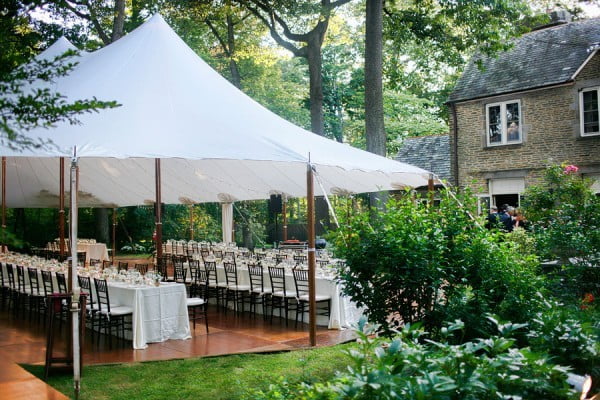
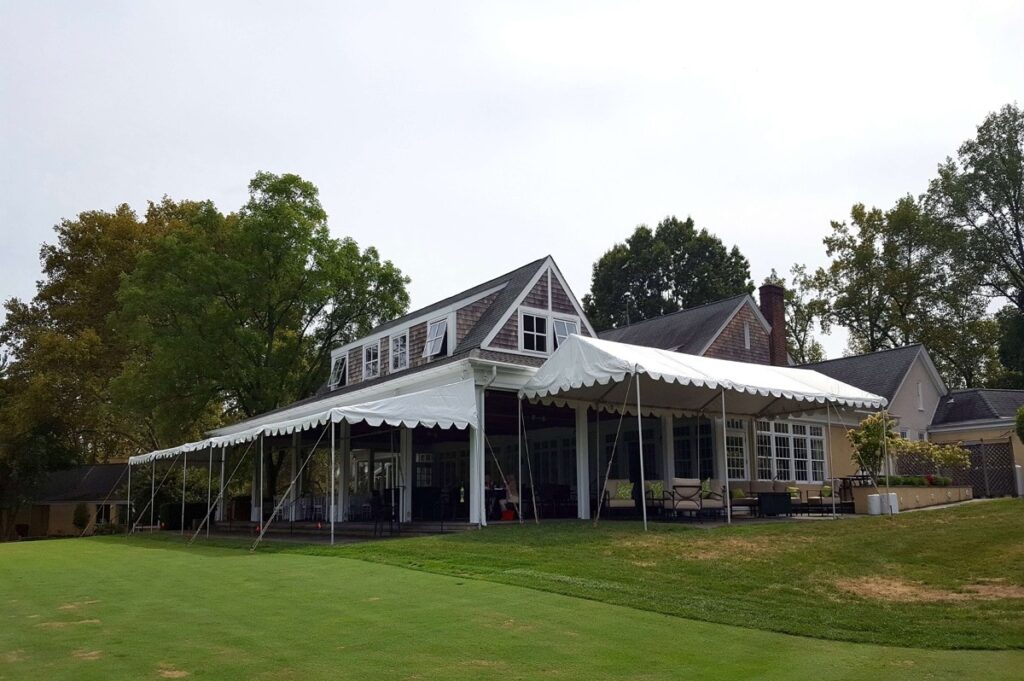
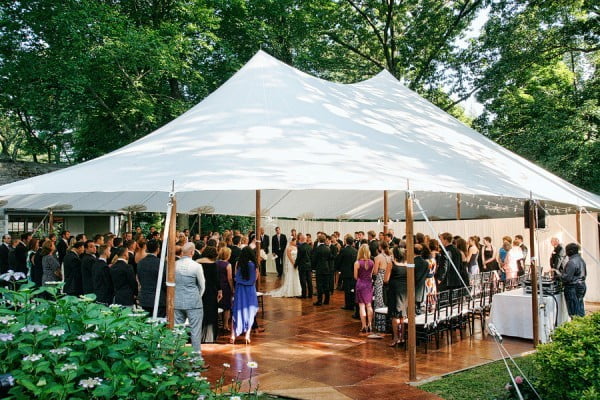


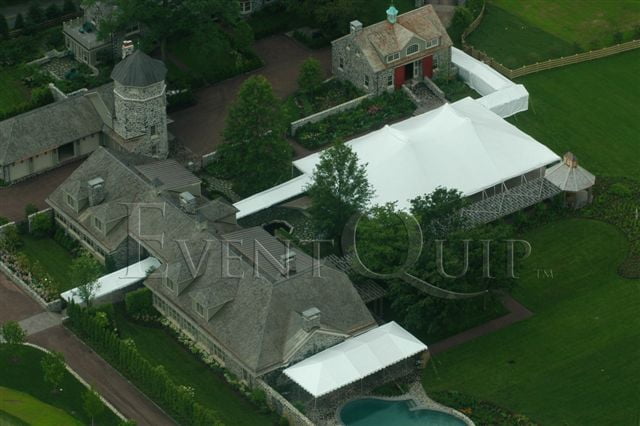
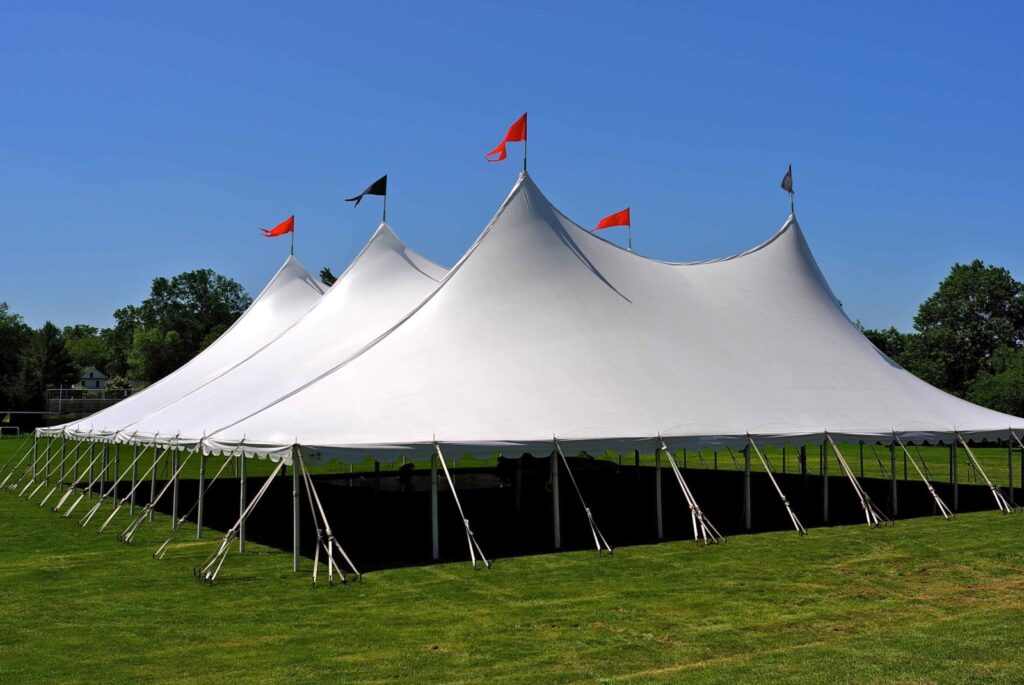
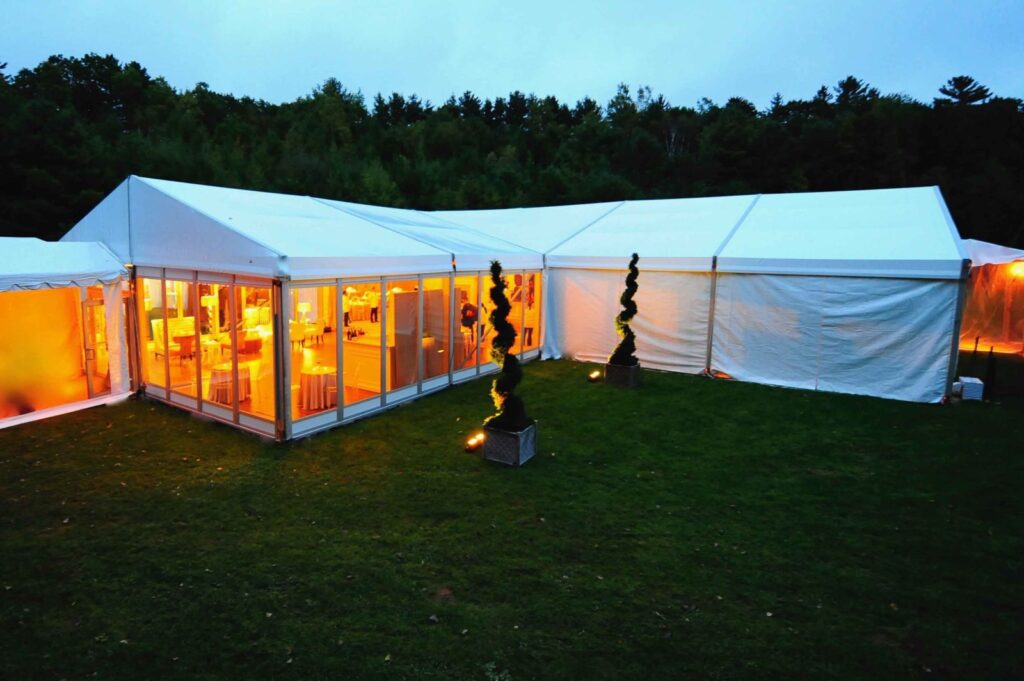
Tent Terminology
Basic Tent and Outdoor Wedding Terminology
There are basic terms that the pro’s at Eventquip use regularly that may be foreign to those outside the tent industry. Expressions and words like “mud shore,” “hip,” “storm band,” and others may be confusing to the layman.
To help you understand, we’ve put together a list of terms that will make you sound like a pro when planning your celebration.
Auger/Screw anchors
A generic name for a family of earth augers which features a helical projection that provides holding power.
Anchor
Hold stable, keep from drifting away.
Base-plate
A 3” round or square by 1/8” thick piece of steel with a tube/pipe attached which slides into the hollow tube leg support. This prevents the tent supports from sinking into soft soil and the tent guys becoming loose.
Beam
Refers to a large member used for rafters, ridges, and eaves in frame tent or fabric structure; the generic term for something that spans.
Beckets
Loops of rope that have been fed through membrane grommets for attaching to staking or lacing.
Bight
A bend in a rope anywhere except the end.
Block
As in “block and tackle” the frame enclosing one or more pulleys and having a hook or strap by which it may be attached to objects.
CAD
Computer Assisted Drawing (CAD), a software program to draw layouts.
Canvas
The coarsely woven natural fabric that is used for tent coverings.
Center Pole
The pole that lies on the longitudinal centerline of the tent and which is used to push the tent fabric up to its point.
Center Section
The section of a tent that forms the roof between two end sections.
Dead Load
The load on a structure that is produced by its self-weight.
Deadman
A type of uplift anchor, normally buried in the ground (hence, its name) which provides its anchorage by a combination of its weight and the weight of the soil captured above it.
Dressing out
The term to describe the important final adjustment process after the tent has been raised.
Eave
The lower edge of the tent roof.
Eave Belt
The reinforcement in the fabric at the tent eave.
Eave Guy
The tie-down rope, cable, or webbing that is located at the side pole.
Egress
The planned avenue to leave the tent.
End Section
The roof section that forms the end of a sectional tent.
Gable End Post
Vertical structure member that supports the gable end of the tent.
Grommet
A metal flange that is placed around a hole in the fabric for reinforcement.
Guy Rope
Rope, chain, or webbing that is used to steady a tent; the tieback element that transfers the load from the tent to the anchoring system, normally stakes embedded into the soil.
Guying Out
The process of stabilizing the tent, under construction, by placing guy ropes and adjusting them.
Hip
The line of the tent roof from the top of the center pole to the corner side pole.
Hip Band
The reinforcement of the tent fabric along the hip.
Hip Pole
Similar to a quarter pole, but occurring on the hip.
Hitch
Anyone of a family of adjustable knots used to fasten a guy rope to a stake.
Jump Rope
A restraint device that fastens to the tent cloth and to the top of the tent pole to keep the pole from falling if the wind should lift the cloth above the pole.
Laceline
Place where tent sections connect, usually with a series of beckets and grommets.
Lines of a Tent
Eave line, Hip line, Ridgeline.
Live Load
The weight superimposed on a structure by its use and occupancy: not including load from wind, snow, earthquake, or dead load.
Marquee
Roof-like structure or awning projecting over an entrance.
Middle
Modular tent top piece that is placed in the “middle” of the top.
Mud Shore
A device used at the base of a tent pole to facilitate rotating the pole up into position during the installation process.
Occupant Load
The total number of people permitted to occupy a structure, or portion thereof, at any one time.
Pitch
The vertical distance of a tent that is measured from the eave to the top of the tent roof.
Poledolly
A device with wheels to install center poles.
Polehorse
A tool that is temporarily connected to the bottom of a center pole and used to raise or take down the pole; type of level.
Purlin
A horizontal member between two rafters that keeps rafters in the proper relationship.
Quarter Band
Also known as storm band, sweep band, wind band; the reinforcement of the tent membrane which connects the quarter pole and hip pole continuously around the tent.
Quarter Pole
The pole intermediary between the center poles and the side poles.
Ratchet
A hinged catch with a toothed wheel or bar whose teeth slope in one direction. Used with webbing to attach sides of tents to stakes and hold them tight.
Ridge
The line defining the longitudinal axis of the tent roof; this line runs alongside the center pole locations and is the highest point on the tent roof.
Ridge Band
The reinforcement of the membrane along the line from the ridge to the side.
Ridge-to-side Pole-band
The reinforcement of the tent membrane along the line from the ridge to the side.
Safety Factor
A co-efficient used in all good design, which takes into account various uncertainties such as variations in material properties, weather, load experience, fabrication and construction tolerances, etc. The use of appropriate safety factors is not optional.
Side Poles
The poles that support the periphery, or outsides of the tent.
Sidewalls
Detachable walls that are installed around the perimeter of the tent to completely enclose the interior of the tent.
Snow Load
The assumed gravity forces acting on a structure due to the weight of snow, which also includes any necessary accounting for drifting or sliding.
Spindle/Pin
The slender tip on the end of a pole which allows it to slip through an eye in the tent covering, thereby holding the pole top in place.
Stake
Piece of steel or wood sharpened at one end for driving into the ground to secure the guy ropes of a tent.
Storm Band
Reinforcement in the tent covering, located either over the quarter poles or otherwise intermediary between the ridge and eaves, and resulting in a complete closed loop around the tent top; used to help hold the assembled top together during severe weather. Also, known as Sweep or Sweep Bands.
Temporary Structure
As specifically defined by the individual applicable code, but generally taken as a structure that will be in place for less than 180 consecutive calendar days.
Thimble
A ridge saddle which is used to form and reinforce a closed loop at the end of the rope or to build up in the tent interior.
Webbing
Flat, strap-like constructions of various natural or synthetic fibers, used for pulling, as guy ropes.
Wind Load
The pressure on a structure due to wind blowing
